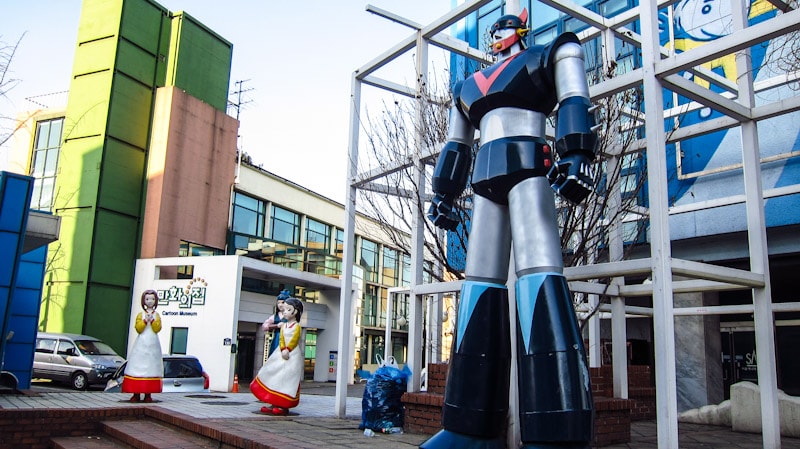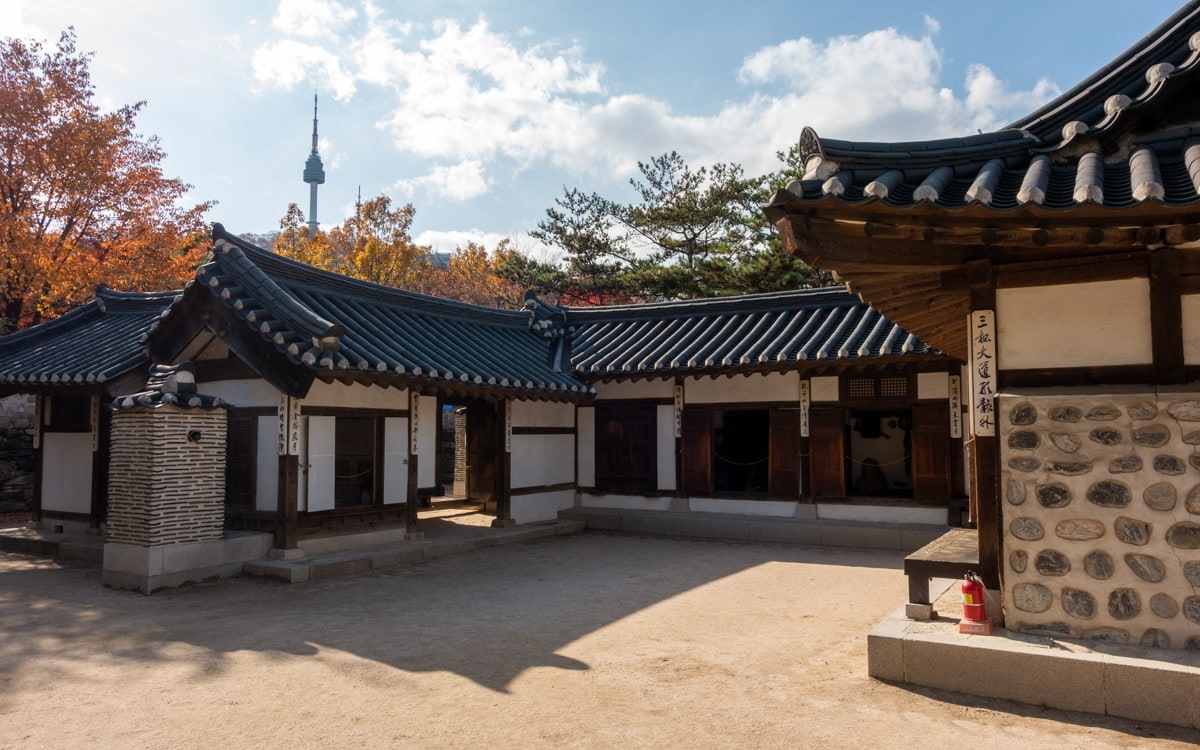
Namsangol Hanok Village is a traditional Korean village that features Korean houses and pavilions, a beautiful small pond, and an interesting time capsule. This area is one of the most beautiful and scenic locations in all of Seoul.
A summer resort known as Jeonghakdong was once located here. The resort was also known as Cheonghak-dong for the blue cranes (cheonghak) that were said to have flown in the area.
When this area was built, much effort went into making it as original as possible. Five authentic hanok, or traditional Korean houses, that were located in separate villages across the city were moved here. These homes belonged to commoners and powerful bureaucrats. Furniture and everyday items have found inside these hanok reflect the status of the people who lived inside these homes at the time.
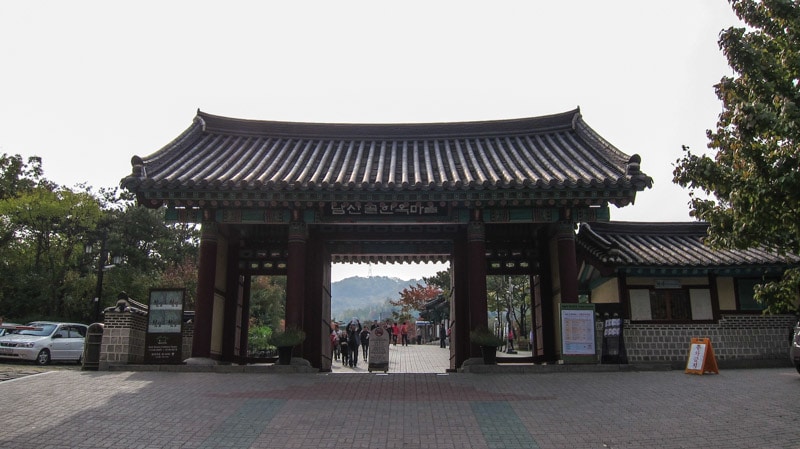
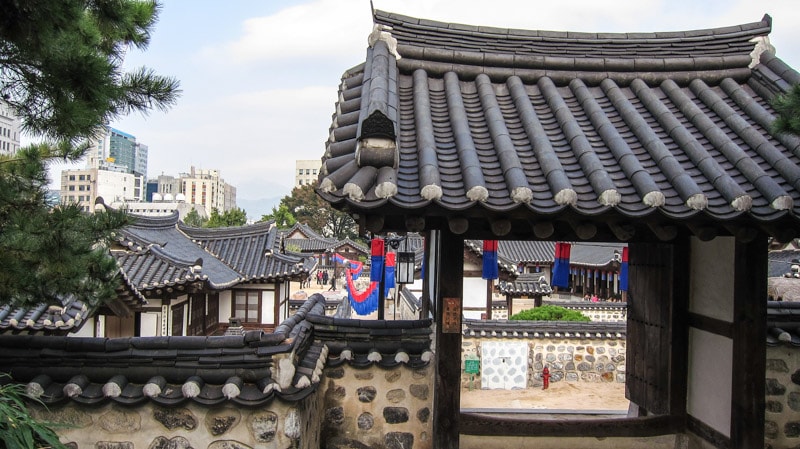
The original shape of the land and terrain was resorted along with other buildings and the pond. Native trees and other plants were planted and the natural flow of water was reestablished, as it was in the ancient days.
Pavilions that once stood here have been restored and are a great example of the charming and blissful life of the people who once lived here. These people lived life in harmony with nature and often wrote poems, played games, and painted.
To the south of the village is The Seoul Millennium Time Capsule. It contains over 600 artifacts representing Seoul and its citizens. It is scheduled to be opened on November 29, 2394.
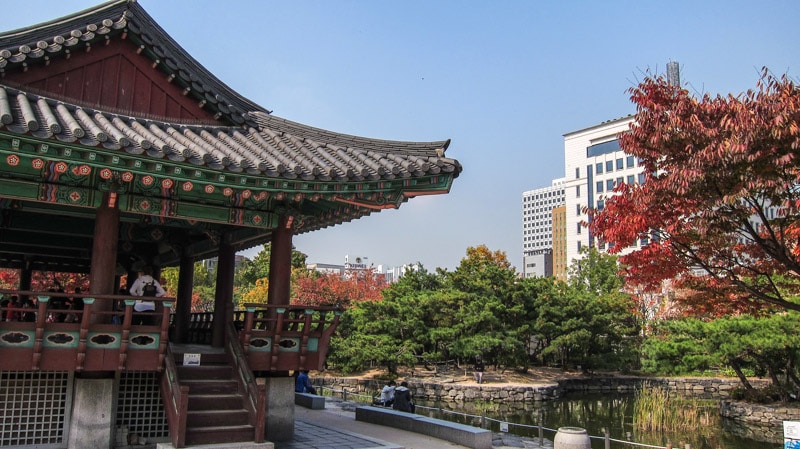
Carpenter Yi Seungeop’s House in Samgakdong
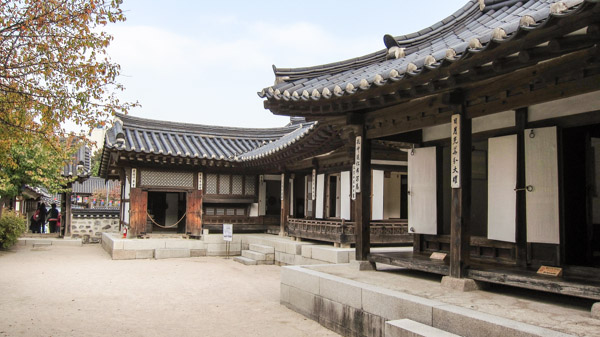
This house was built by Yi Seungeop, who was a master carpenter who also worked on rebuilding and restoring Gyeongbokgung Palace in 1867. The house was originally located at 36-2 Samgakdong, Jung-gu in central Seoul near Cheonggyecheon Stream.
Around 1890, the family Gyeongju Yi resided in the house. Starting in 1970, the building was used to store historical records of Chohung Bank, which today is known as Shinhan Bank.
The house was moved to the Namsangol Hanok Village in 1998 when the village was established.
The anchae (inner quarters), sarangchae (outer quarters), and a middle gate are the only features that remain. Originally, the house was large with eight buildings which included the haengnangchae (servants quarters). The main body of the house was composed of the anchae and sarangchae. This part of the house was bigger and had taller roofs and beautiful verandas. It also featured a low wall which divided space for men and women.
The importance of each space varies based on the height and shape of the roof. This feature, along with other unique construction designs, are a great example of late Joseon Dynasty architecture.
Gim Chunyeong’s House in Samcheongdong
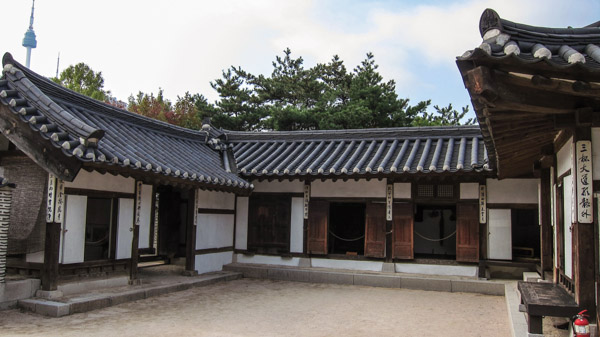
Gim Chunyeong’s House, originally located at 125-1, Samcheongdong, Jongno-gu in northern Seoul, was built by Gim Chunyeong for his family around 1890. The Gim family continuously used this house over the years. The last person to live here was Gim Honggi, the grandson of Gim Chunyeong.
Gim Chunyeong’s House was relocated to the Namsangol Hanok Village when the village was established in 1998.
The house is divided into the anchae (inner quarters) the sarangchae (outer quarters). Each quarter has its own individual gate. Both sections of the house are arranged to fit the shape of the surrounding land which is a key feature of Korean houses.
Min Family’s House in Gwanhun-dong
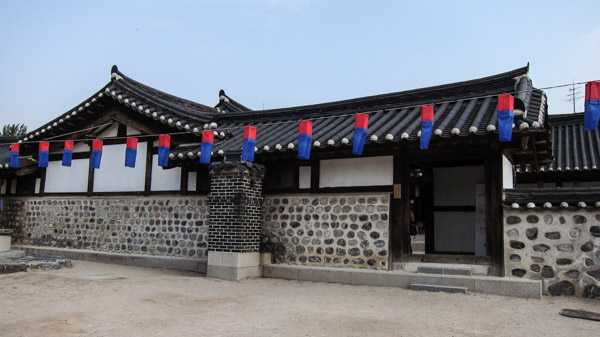
Min Family’s House, once owned by Min Yeonghwi (1852-1935), built this house along with several other structures for his family and other relatives. Min built the structures on a vast open lot just east of Insadong at 30-1 Gwanhun-dong, Jongno-gu, Seoul.
The house was believed to have consisted of the anchae (inner quarters), the sarangchae (outer quarters), the daemunganchae (gatehouse), the byeoldangchae (detached house), the jungganchae (middle quarters), and the haengnangchae (servants quarters). All but the anchae and jungganchae were dismantled by the new owner.
In 1998, the anchae was relocated to the Namsangol Hanok Village. The master bedroom was restored. The sarangchae and the byeoldangchae were rebuilt.
The anchae features a kitchen and inner room situated side by side. This construction is unusual in Seoul as the design of the anchae usually features an L shape.
Min Family’s House is a large and spacious wooden building that features two tall pillars. The 6-kan in size kitchen features a brick ventilation system, which would have been found in an upper class family home.
Seoul Millennium Time Capsule
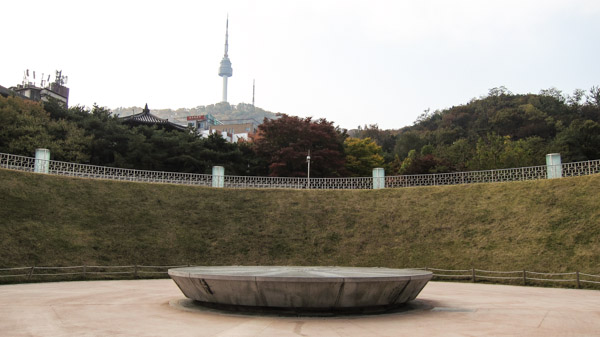
Yun Family’s House In Ogindong
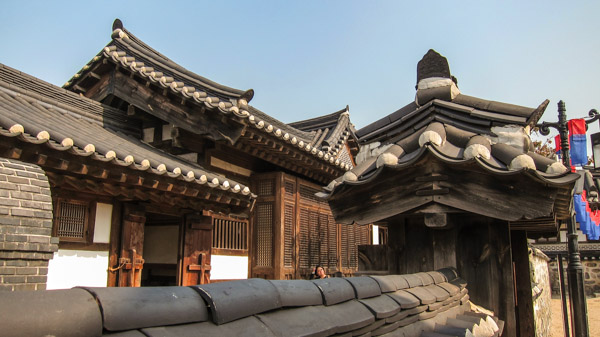
This building is a replica of Yun Family’s House built around 1910 at 47-133, Ogin-dong which is located in northwest Seoul west of Gyeongbokgung Palace. Yun Deokyeong, who owned the land at the time, was an uncle of Empress Sunjeonghyo, the wife of Emperor Sunjong.
At the location in Ogin-dong, Yun built around 20 buildings for both his family and other relatives. One of the structures he built was Park Nosu’s House, a Western style building. The house still remains today.
The house at 47-133, Ogin-dong also still exists. It was built as the residence of Yun’s concubine. Efforts were made to move the house to the Namsangol Hanok Village but attempts failed as the house was too fragile and old to be relocated.
The replica of Yun Family’s House was built under careful supervision to ensure that the reproduction would be true to the original. No details were too small including replicating the uneven ground which the house was built on.
The house was built in a square shape with a simple architectural design. It features a large anchae (inner quarters), a wood floored room which was used as the sarangchae (outer quarters), and multiple gates. The anchae, designed with decorative pillars, is the focal point of the house.
Yun Taekyeong’s Jaesil In Jegi-dong
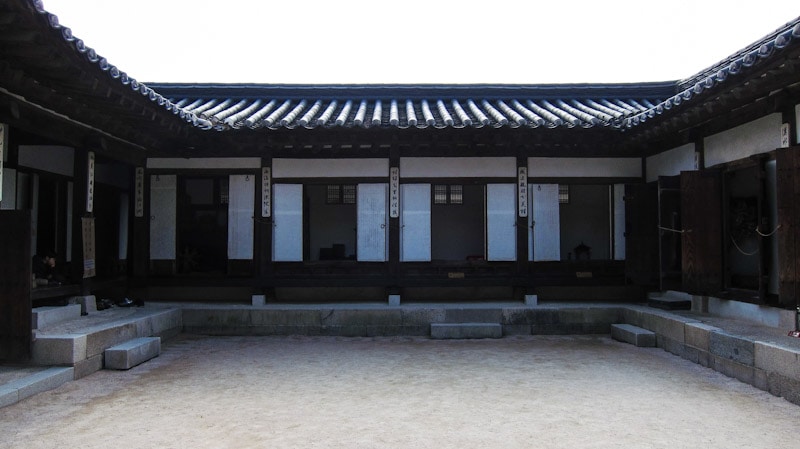
This house is believed to have been built in 1906 by Haepung Buwongun Yun Taekyeong after his daughter, Empress Sunjeong, became Crown Princess. Yun Taekyeong was the father-in-law of Sunjong or Emperor Yunghui, the final Emperor of Korea.
The house was originally located at 224, Jegi-dong, Dongdaemun-gu in northeast Seoul. The structure was moved to the Namsangol Hanok Village in 1998 when the village was established.
Yun Taekyeong built the structure not only as a house but as a shrine for himself and his daughter Lady Yun of Haepyeong, who became Empress Sunjeong a year later in 1907. The house was used for ancestral worship rituals known as Jesa.
The sadang (shrine) was destroyed in 1960 and was not rebuilt until the house was moved in 1998. The new sadang is located at the innermost past of the house on the highest ground.
On lower grounds, south of the sadang is the main building which consists of the anchae (inner quarters) and the sarangchae (outer quarters). Connected to the main building is the haengnangchae (servants quarters). The construction of the building is symmetrical which allowed for equal space for men and women. At the center is a courtyard that leads to the daecheong (wood floored main hall).
Many interesting architectural designs, details, and decorations are visible on the walls, doors, windows, and wood.
Namsangol Hanok Village Information
Hours
Hanok
April - October: 9:00 AM - 9:00 PM
November - March: 9:00 AM - 8:00 PM
Garden
24 hours
Closed on Mondays
Admission
Free
Address
28 Toegye-ro 34-gil, Jung-gu, Seoul, Korea
GPS Coordinates: 37.559127,126.994469
How to Get Here
Take Subway Line 3 or Line 4 to Chungmuro Station (Exit 4).
Continue on Hanongmaeul-gil Street for 5 minutes.
Map
Official Website
Additional Resources
Viator by TripAdvisor
Viator is a popular online platform that helps travelers book tours, activities, and unique experiences worldwide, including in Seoul. It connects users with a wide selection of options – from sightseeing tours to cultural events and outdoor adventures – all offered by local providers.
Klook
Klook offers discounted tickets and reservations for various attractions and services in Seoul, from theme parks and museums to tours and transportation options.
Rakuten
Save money while exploring Seoul with Rakuten's cashback program. Book your hotels or other services through Rakuten and enjoy cashback rewards and exclusive deals.
If you sign up using the link below, you could earn $30 cashback on your first purchase over $30.
Book Recommendations
For an immersive guide to Seoul, many travelers choose to bring a book along. Fodor's Seoul, for example, offers detailed recommendations on sights, restaurants, maps, and travel tips.
Nearby Sights
Chungmuro Pet Street
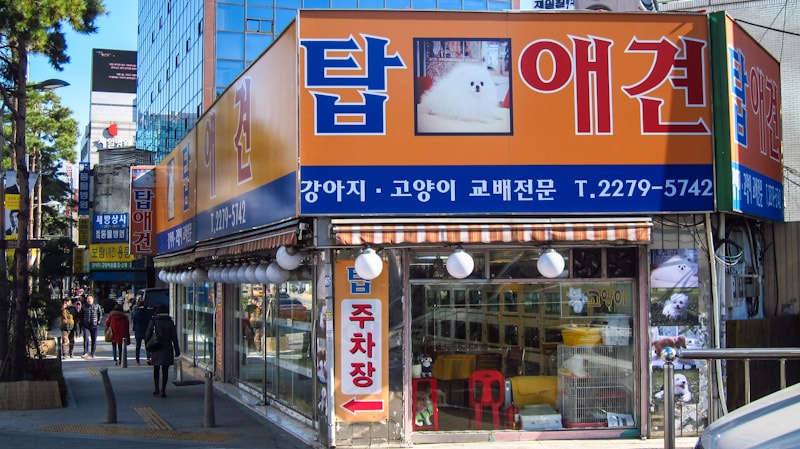
Chungmuro Pet Street is a group of pet stores with dogs and cats, animal hospitals, groomers, and veterinarian offices located east of Chungmuro Station. The collection of markets is located along Toegye-ro street just outside exit 1 of the subway station. The market was first established in the 1970s. Locals call the area "Aewangyeon Market" which means "Puppy Market."
Myeongdong Cathedral
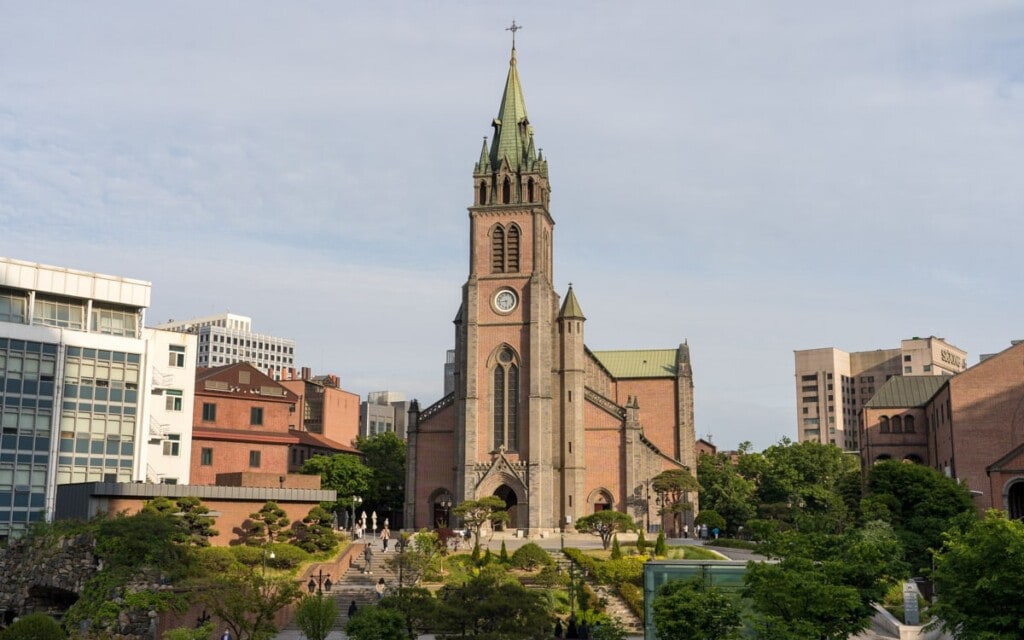
Myeongdong Cathedral was the first and most important Catholic church in Korea and is an important symbol of Christianity in the country. The church is an important icon of Korea and Myeongdong. The official name of Myeongdong Cathedral is Cathedral Church of the Virgin Mary of the Immaculate Conception. The elegant cathedral was the first Gothic style church in Korea to be constructed of brick.
Jangchungdan Park
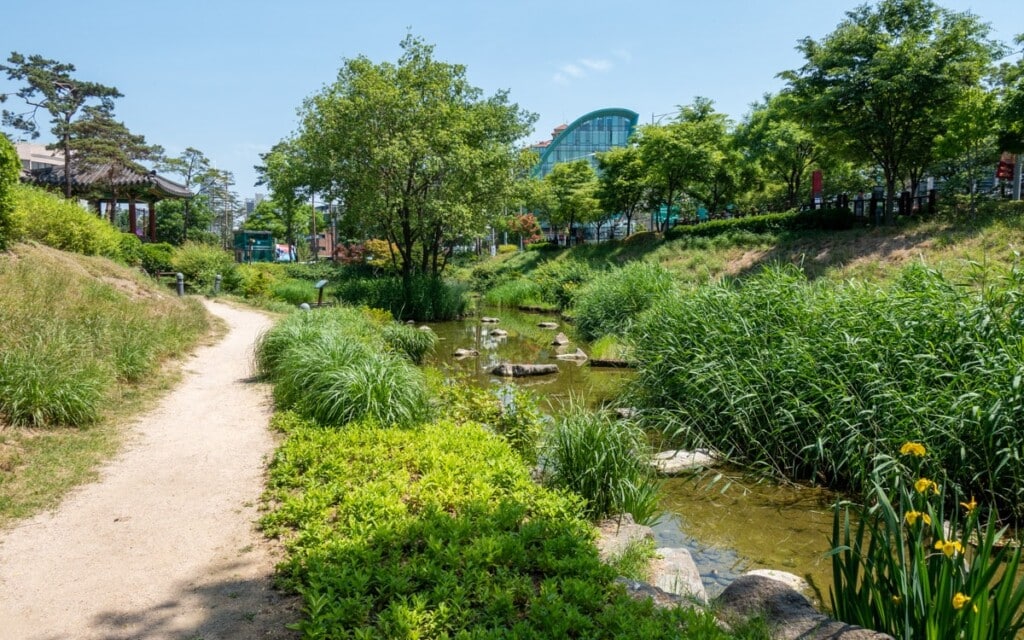
Jangchungdan Park, located on Mt. Namsan, is a park where a shrine and tablet once stood that honored those who died trying to protect Empress Myeongseong. Many soldiers died trying to protect Empress Myeongseong from the Japanese. Today visitors to the park can find multiple statues and memorials including one for the 1919 Independence Movement of Korea.
Myeongdong
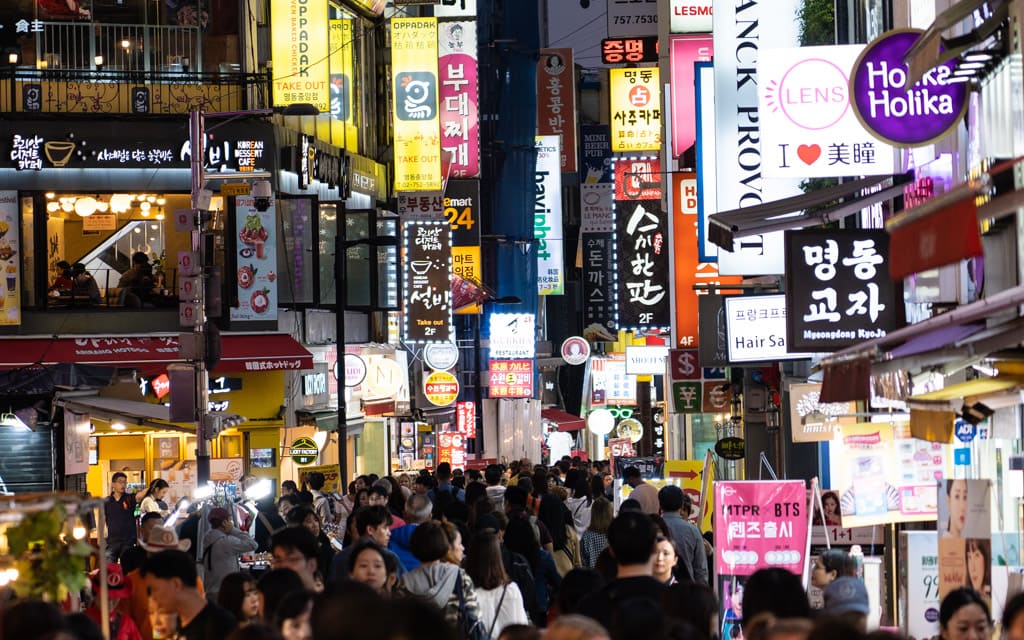
If you are looking for some of the best shopping and eating in Seoul, then start with Myeongdong. This popular district features street food carts, major shopping malls, and entertainment. The dense grid of streets found in this bustling neighborhood is packed with people at all hours of the day looking to enjoy some of the best shopping, street food, and nightlife in all of Korea.
Jungbu Dried Seafoods Market
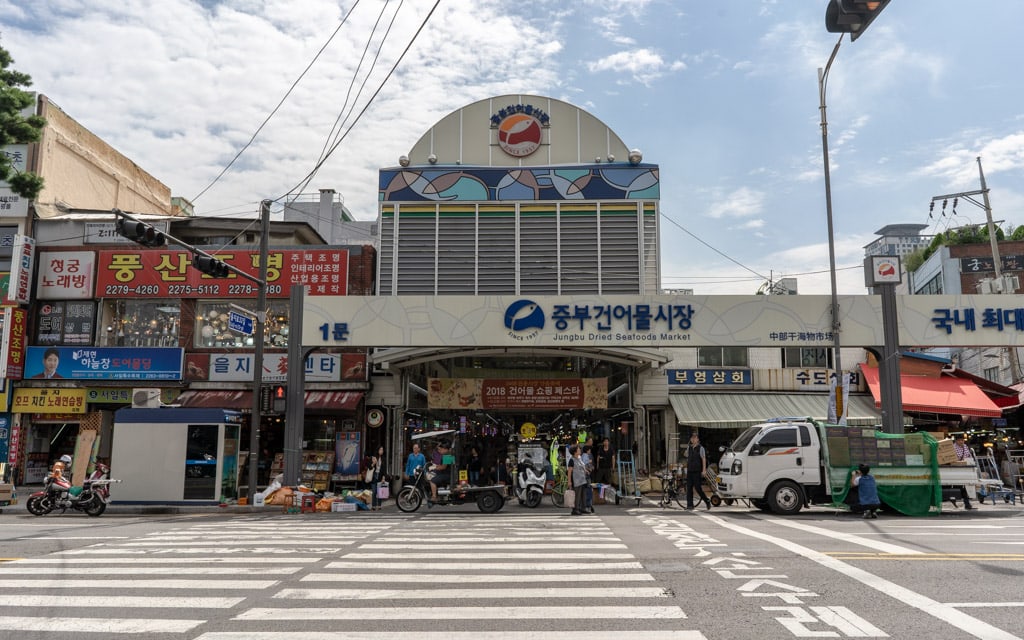
Jungbu Dried Seafoods Market is one of the best shopping spots to find large assortments of dried seafood at prices 30% less than other places in Seoul. Dried seafood items sold here include laver (seaweed), anchovies, squid, pollack, and more. The size of the items vary from the very small to large, full fish.
Last Updated on Mar 14, 2025
